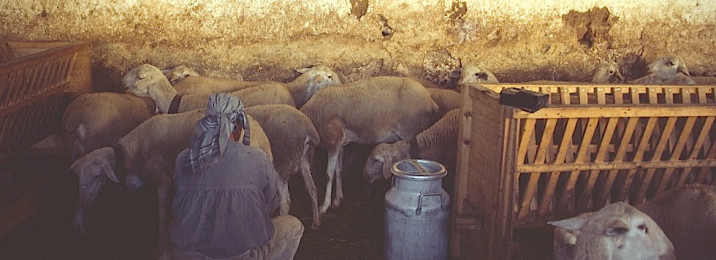A Taste Tour of Spain’s Regional Sheep Cheeses
We can’t resist an artisanal Spanish sheep cheese at Ataula. Served with fresh bread and olive oil, scattered amongst fresh salad leaves or presented on an indulgent after dinner Tabla de Quesos (cheese board), there’s no escaping the richness and variety of Spain’s classic cheeses. To give you a taste of the delicacies created every day across the diverse regions of Spain, we’re taking you on a tour of some of the country’s finest and most iconic cheeses…
Castille-Leon
Here in the Mid West of Iberia sheep are bred predominantly for their milk. Two distinct breeds of sheep are grazed here; the Churra and the Castilian.
Zamurano
This is a classic Spanish cheese, made from the full milk of Churra sheep. It is a hard cheese, aged for around 6 months and rubbed with olive oil to give it its iconic dark rind. With a sweet-savory and creamy ‘piquant’ tang, this cheese bears strong similarities to the better known Manchego made further south.
Burgos
Named after the famous market in the centre of the province’s capital Burgos, this is a fresh, wet, pristinely white cheese with a delicate sweetness. It is made with whey which gives it its creamy softness – with just a touch of rubberiness to hold it together.
Pata de Mulo
The name of this cheese translates literally as Mule’s Leg, all thanks to its cylindrical shape and rough texture which comes from hand-rolling the cheese in a cloth. It’s a more compact cheese than the Burgos variety, with a more acidic tang and salty taste.
Castile-La Mancha
A little further south and further inland lies the region of Castille-La Mancha. Thanks to the provinces hot, dry climate, the milk of its Manchegan sheep has a very different flavor to that of it’s Northern cousins. The dry weather produces a fattier, sharper-tasting milk, perfect for making Spain’s most famous sheep cheese…
Manchego
This is the iconic Spanish cheese. It may closely resemble the Zamurano cheese of Spain’s Northern plateau, but it has an entirely different taster. This is a mild cheese with a deep salty flavor, stemming from the saltier, more acidic milk of Castile-La Mancha’s Manchegan sheep.
The South West
In the far South West of Spain lies the Extremadura, a region of climactic extremes. The cheeses of this region owe their distinctive flavors from the Merino sheep which provide the milk for the area’s signature cheeses. Merino sheep graze on acorns and fresh grass, producing very little milk. The milk they do produce, however is rich in fats and dry extracts.
Torta del Casar
Made almost exclusively in the town of Casar de Cáceres, this cheese is heavily fermented for 60 to produce a soft cheese which can be eaten with a spoon and spread on bread. Served as both a savory and a dessert, this unique, deep yellow cheese is like few others produced in Spain.
La Serena
Made from the same ingredients as the Torta, La Serena is a very different cheese. Matured for 30 days, this cheese becomes very runny and develops an increasingly bitter flavor which tastes incredible on fresh, toasted bread.
The North
In the far North of Spain lies the Basque country, grazed by Laxta sheep. These animals produce a wide variety of different artisanal cheeses including Idiazábal, a thick, heavily-pressed hard cheese which results in a very compacted centre. The only true ingredient is raw, full cream milk from the Laxta sheep. This cheese is served both smoked and unsmoked and has a dry, oily texture which does not crumble.
Meanwhile, lying between the regions of Teruel and Castellon lies the district of Maestrazgo where an especially beautiful, volcano-shaped cheese in made. Known as the Tronchón, this cheese has flower designs etched into its rind and has an aromatic, slightly acidic flavor.
You don’t need to travel to distant regions of Spain to enjoy true Spanish flavor. Our Spanish restaurant in Portland brings a taste of Iberia to your local area. For artisanal Spanish cheese, why not order our Tabla de Quesos or enjoy a scrumptious plate of our favorite Remolacha & Queso Fresco. Reserve your table at Ataula today. Or tell us about your favorite Spanish cheese by tweeting @ataulapdx.


No comments
You can be the first one to leave a comment.